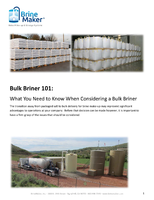Software suits automated instrumentation systems.
Press Release Summary:
LabVIEW v7.1 extends Express technology to automated instrumentation and real-time applications with Express VIs for NI modular instruments. NI-DAQmx measurement services facilitate hardware-timed loop implementation. PDA Module delivers data acquisition functionality, including multi-channel acquisition and analog and digital triggering. Software includes execution timing and graphical debugging for low-level control and visibility of real-time system execution.
Original Press Release:
National Instruments LabVIEW 7.1 Extends Express Technology for Automated Instrumentation and Real-Time Systems
AUSTIN, Texas - May 4, 2004 - National Instruments (Nasdaq: NATI), a global leader in virtual instrumentation, today announced LabVIEW 7.1, a significant upgrade to the family of LabVIEW graphical development products. LabVIEW 7.1 extends Express technology to automated instrumentation and real-time applications with new Express VIs for NI modular instruments and NI-DAQmx, advanced debugging and low-level execution timing for the LabVIEW 7.1 Real-Time Module.
"Last year, LabVIEW 7 Express introduced a revolutionary way to create test, measurement and control applications with configuration-based development and code-generation tools such as Express VIs and measurement assistants," said Ray Almgren, NI vice president of product marketing. "By extending Express technology to the broad spectrum of NI automated instrumentation, LabVIEW 7.1 simplifies development for all LabVIEW users, regardless of their hardware platforms."
With LabVIEW 7.1, NI continues to advance automated instrumentation for hardware platforms ranging from high-performance modular instruments to real-time data acquisition systems and handheld devices. With five new Express VIs for NI digitizers, signal generators and high-speed digital I/O, engineers can configure sophisticated measurements and acquire data with just a few mouse clicks. The redesigned NI-DAQmx measurement services software in LabVIEW 7.1, available in real-time applications for the first time, increases performance of single-loop PID applications by 30 percent and simplifies hardware-timed loop implementation. In addition, the new LabVIEW 7.1 PDA Module delivers more data acquisition functionality, including faster multichannel acquisition and analog and digital triggering. Engineers can use this module to create customized handheld DMM applications and communicate with Bluetooth-enabled devices.
LabVIEW 7.1 also introduces advanced execution timing and graphical debugging for low-level control and visibility of real-time system execution. With the new timed loop, an enhanced while loop in LabVIEW, engineers can specify precise timing of code segments, coordinate multiple time-critical activities and define priority-based loops for creating multirate applications. To further optimize performance of their applications, engineers can use the new LabVIEW Execution Trace Toolkit with the LabVIEW Real-Time Module to quickly identify sources of jitter, such as memory allocation and race conditions.
In addition to speeding development of real-time applications on existing platforms, this release extends LabVIEW Real-Time to run on certified desktop PCs. Engineers now can create real-time systems by integrating the large installed base of PCI I/O hardware with desktop PCs.
The new LabVIEW 7.1 FPGA Module, which also releases with LabVIEW 7.1, improves efficiency and functionality of embedded FPGA applications. The latest version features single-cycle while loops that execute multiple functions within a single 25 ns "tick" of the 40 MHz global clock. With this new feature, engineers can use LabVIEW to develop FPGA code that executes as efficiently as hand-coded VHDL. They also can reuse their existing VHDL code in LabVIEW FPGA applications with a new HDL interface node. In addition, engineers now have three new FPGA targets, including the NI Compact Vision System for creating high-performance custom machine vision applications.
About LabVIEW
Since 1986, NI LabVIEW has redesigned measurement and automation with its unique graphical development methodology. Noted by the editorial community as premiere software in the electronics, industrial control and electronics design industries and recipient of ten awards in 2004, LabVIEW delivers an intuitive and powerful way to acquire, analyze and present measurements at every stage of development, from prototyping to design to manufacturing test. LabVIEW is available on Windows, Macintosh, Sun Solaris and Linux operating systems.




